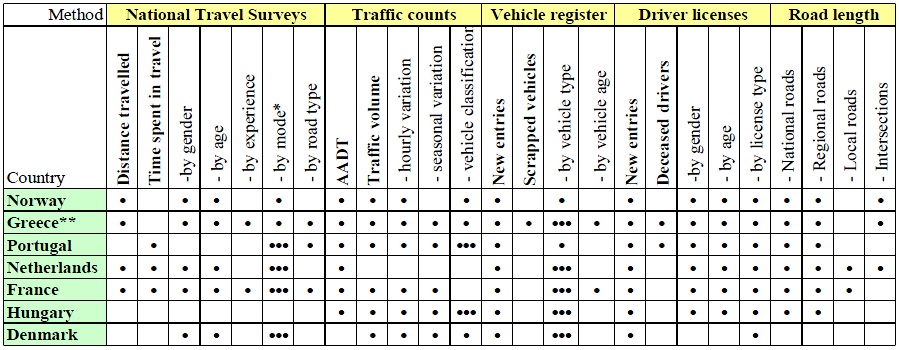
The objective of this paper is the analysis of the current state-of-the-art in the EU as regards risk exposure data for road safety analyses, in terms of data gathering, availability and use. In this framework, the definitions and properties of the various exposure measures used in road safety analysis are examined (vehicle- and person-kilometres, vehicle fleet, driving licenses, road length, population, number of trips, and time in traffic), in light of their relationship to the needs and uses of risk exposure. Moreover, the methods of collecting exposure data at national level (travel surveys, traffic counts, and national registers) are presented and assessed, in order to determine the advantages and limitations of each method, which in turn determine the quality and usability of the available exposure data. Finally, the potential of international accident risk comparisons is discussed, through an investigation of the exposure data availability and quality in the International Data Files (EUROSTAT, ECMT, IRTAD, UN/ECE, and IRF). The results of the analysis allow for an overall picture of the current risk exposure data availability, collection methods and exploitation potential to be drawn, highlighting common practice and necessary steps towards an improved risk exposure data framework in the EU.
| ID | pc78 |
| Presentation | |
| Full Text | |
| Tags | information systems, international comparisons |













